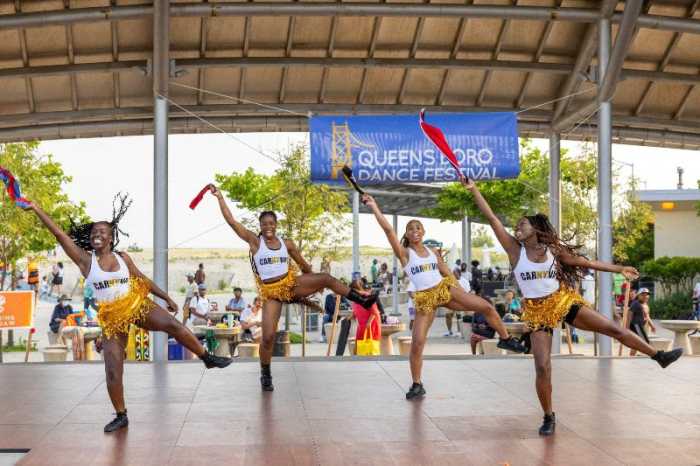While the modern art…
By Courtney Dentch
Mannhattanites and other tourists may have only just discovered the arts scene in Long Island City since MoMA QNS came to town last year, but to those in the know western Queens has been a haven for artists and museums for decades.
While the modern art museum brought more attention to the pre-existing arts organizations in Long Island City and Astoria, such as the Isumu Noguchi Sculpture Museum, Socrates Sculpture Park, PS 1 and the American Museum of the Moving Image, these groups are hoping the visitors will keep coming once MoMA returns to Manhattan.
“We’ve all been here for a long time,” said Amy Hau, administrative director for the Noguchi Museum. “We had our own audience, and we hope the new audience that we’ve seen through MoMA will continue.”
Western Queens is no stranger to creative expression. Some of the area’s earliest artists include Steinway and Sons piano manufacturers, which opened in the 19th century in Astoria, said Bob Singleton, head of the Greater Astoria Historical Society. Paramount Studios, Silvercup Studios and Kaufman-Astoria Studios all moved into homes in Long Island City around the 1920s, and Silvercup and Kaufman still make films there.
“This community has been here for generations,” Singleton said. “This has always been a home for creative people. What you are having today is another chapter of proud creation in the area.”
Museums and studios began to pop up in the last quarter of the 20th century as artists discovered that the area was easy to get to by public transportation and as rent prices started to rise, Singleton said.
Sculptor Isumu Noguchi, who is a Long Island City resident, began converting an industrial building into a studio and gallery space, Hau said. The museum, which was able to accommodate large sculpture pieces, opened to the public in the mid-1980s and its hours have increased along with its audience, she said.
“He was attracted to Long Island City because he had been out here shopping for materials,” Hau said. “He was also just wanting to get away from the distractions of Manhattan — people coming in and out of the studio. The buzz of Manhattan didn’t let him concentrate on his work.”
About the same time, in 1985, Socrates Sculpture Park was founded on Vernon Boulevard by a sculptor whose studio overlooked the park, and it opened with exhibitions the year after, said Alyson Baker, executive director of the institution.
“He recognized the potential of this waterfront park to become a great exhibition space,” she said.
The two institutions joined PS 1, a school that was converted into a gallery space in 1971, and other organizations followed. In 1988, the American Museum of the Moving Image started displaying Long Island City and Astoria’s proud history in film. Other artists and galleries, such as the Sculpture Center, the Women’s Studio Center, the Fisher-Landau Center and more also moved into the area.
When MoMA, which is affiliated with PS 1, was looking for storage space outside Manhattan, the museum was drawn to the vibrant arts community that was already in place, said Ruth Kaplan, the museum’s deputy director for marketing and communication. The organization decided to move its exhibitions and offices into the building last year while its Manhattan headquarters are renovated, she said.
“The general spirit has been wonderful,” Kaplan said. “There are so many wonderful cultural organizations nearby, it was just great to have that synergy.”
The other institutions also got a boost in publicity as well as attendance as visitors to the MoMA QNS site explored Long Island City’s offerings.
“When they made their move, it was enormously helpful to all of us because it brought attention to the area,” Baker said. “We were already here to help draw attention and let people know about the institutions here.”
And within the art world, studios and galleries in Long Island City have gained prestige because they call MoMA a neighbor, said Melissa Wolf, executive director of the Women’s Studio Center.
“Before MoMA moved in, it was hard to get a curator to come over here,” she said. “The lasting change that MoMA will have made is the fascination with this area now.”
MoMA is scheduled to move its headquarters back to Manhattan in late 2004 or early 2005, but keep the Queens space as a storage and study center, Kaplan said. The permanent institutions in Long Island City are hoping that MoMA’s visitors will continue to cross the East River.
“A momentum has been built because of their presence,” Baker said. “A lot of people made their first trips to area to visit MoMA, and it is my hope that they’ll continue to visit the other organizations that are here, now that they know how easy we are to get to.”
Reach reporter Courtney Dentch by e-mail at TimesLedger@aol.com, or by phone at 718-229-0300, Ext. 138.


































